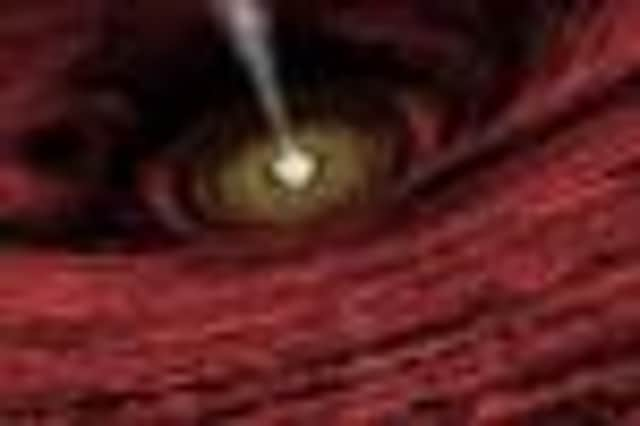Heriot-Watt scientists to create mini black holes


Researchers at Heriot-Watt University in Edinburgh have been awarded £2.3 million to build replicas of the vast vortexes formed from collapsed stars at the centre of galaxies, whose gravitational pull is so strong that light cannot escape their grasp.
The European Research Council funding will be used to explore new areas of quantum physics examining how energy and matter interact.
Advertisement
Hide AdAdvertisement
Hide AdThe findings could lead to advances in nanotechnology including increasing the power of computer chips and lasers, the “exponential” speeding up of searching data bases and accurately measuring the size of DNA molecules.


Dr Daniele Faccio and Dr Brian Gerardot, from the university’s Institute of Photonics and Quantum Sciences, will lead the five-year project
Dr Faccio said: “Black holes are associated with collapsing stars and the conditions there are so extreme. That is where all our physical laws are stretched to the limit. We have the theories but we can’t go there to test them. So, we want to test our theories by building one of our own to see if these laws are correct.”
Dr Faccio will create a black hole by using a laser emitting pulses a 100 times a second. The power emitted by each pulse is then measured in trillions of watts, which he describes as being “10,000 times the power of a nuclear power plant”.
He will then examine how light behaves in materials which are themselves moving at the speed of light.


Dr Geradot’s research, also looking at light matter dynamics, involves testing and controlling how single photons and electrons interact with each other in computer chips.
Professor Alan Miller, the university’s deputy principal of research and knowledge transfer, said: “To secure two awards from such a competitive funding scheme run by the European Research Council confirms the international competitiveness of research carried out at Heriot-Watt.
“The scale of the funding gives these experts the scope to really delve into some of the most complex and fundamental questions about how energy and matter interact.”
Advertisement
Hide AdAdvertisement
Hide AdAlastair Allan MSP, minister for science, said: “Quantum physics is an exciting area of science, with the potential for developing a range of real life applications in fields such as communications. This award further enhances Scotland’s research reputation as a ‘science nation’ and once again shows the success of our universities in attracting funding from Europe.”
Where the laws of gravity and time break down
BLACK holes form when a star “dies” after running out of fuel for nuclear fusion at its core and collapses in on itself.
The star then virtually disappears from the universe into a point of infinite density, a place where the laws of general relativity that govern space and time break down.
There is a region of space surrounding a black hole from where light cannot escape – hence their name.
Whilst they cannot be seen it is possible to observe them by their effects on their surroundings.
In 2004 astrophysicist Professor Stephen Hawking, pictured, said that he had revised his 1975 belief that black holes destroy everything that falls on them.
Previously he calculated that once a black hole formed, it radiated energy and started losing mass by giving off “Hawking radiation”.
Instead, he said they continued to emit radiation for extended periods, and eventually opened up to reveal information within them about what fell in.